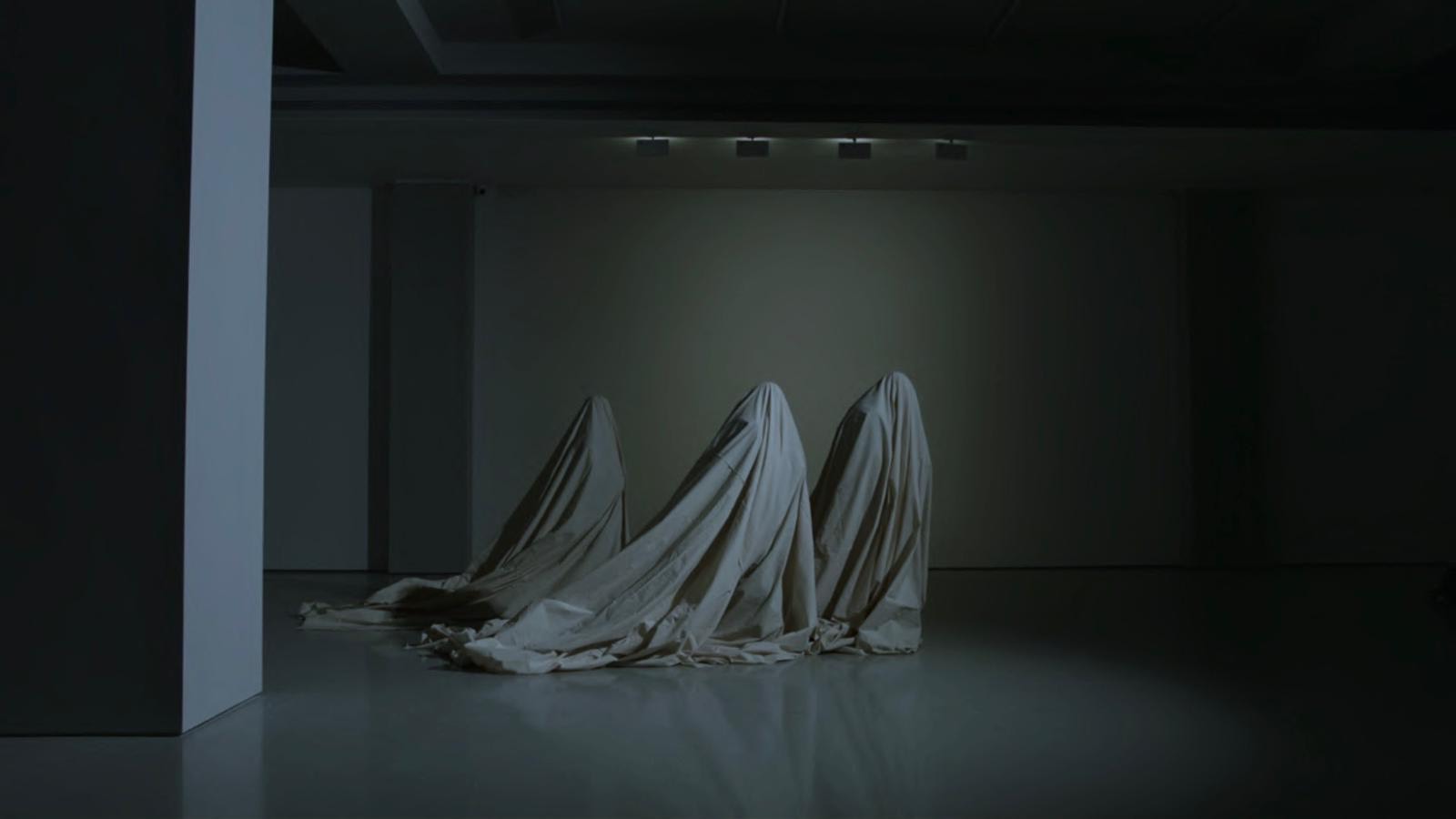Staring Back at the Python’s Shadow

Filmvorführung & Gespräch 20.02.2024 14:00
Mit Ding Dawei
Sprache Die Veranstaltung findet auf Englisch statt
FREIER EINTRITT Spenden erwünscht
BESUCH SAVVY ist mit dem Rollstuhl zugänglich
14:00 | Mittagessen |
15:00– | Filmvorführung & Gespräch |
In the framework of our 11-days-long programme LET'S SIT DOWN TOGETHER AND TALK ABOUT A LITTLE CULTURE, we cordially invite you to join us for a film screening of The Second Interrogation, presented and introduced by Ding Dawei. After the screening Ding Dawei will be in conversation with the film's director Wang Tuo.
The Second Interrogation 第二次审问
2022
By Wang Tuo
Video installation (color, sound, 4K) in two parts 影像装置(彩色,有声,4K)
Part one: two-channel video 上部:双频影像,24’28”
Part two: single channel video 下部:单频影像,30’
Edition 5+2ap
In 2017, Wang Tuo created the video Interrogation based on an interview he conducted with a commissioner for Discipline Inspection working in a local jurisdiction of China. In the video, the interviewee first describes the psychological techniques he needed when he was taking an interview for his position years ago; his recount then slowly evolves into a description of the psychological methods he has frequently been using in interrogation.
The Second Interrogation is based on Wang Tuo’s observations and reflections on cultural censorship in the art world that he has experienced in China in recent years. In this two-channel video work, he envisions two extreme, yet highly grounded situations where the artist becomes the censor and the censor becomes the artist. In the video, the key to the encounter and eventual transformation of their identities is the reassessment and divergence of the seven astounding performances (known as the “Seven Sins”) at the 1989 China/Avant-Garde Exhibition in Beijing, which had faced censorship.
Together with the student democracy movement that was about to sweep the country the same year, these radically rebellious works became a turning point in the destiny of contemporary China. Since then, contemporary culture and art have faced harsher censorship and repression, the political reality has started to contract drastically, and the democratic process has been interrupted. The two protagonists with different visions of the Chinese system come to know each other at an exhibition opening talk. After a series of confrontations and personal encounters, their perceptions of their own identities have changed. The artist becomes a covert surveillant examining the ideological problems of the art world for the government; the censor, on the other hand, seems to have grasped the true essence of art in a totalitarian state. During a new live performance that the artist has been preparing for a long time as a tribute to the “Seven Sins,” the censor enters and eventually reinvents the work, becoming its actual author. By the end of the video, the two protagonists, who have exchanged identities, engage in a heated debate about the way forward for the country and the enlightening significance of art in social change.
DING Dawei is a curator, critic, and film producer born in Hebei, China. His work revolves around documentary films, archival films, and experimental cinema. He founded the Beijing International Short Film Festival (BISFF) and has served as the festival director since 2017. He consistently collaborates with museums and institutions, curating time-based media exhibitions and screenings as part of his professional endeavors. As a film critic, his articles have been published in over 50 magazines, newspapers, and websites, including Cinema World, The Paper, HK01 Weekly. He is a member of L’Académie des Lumières in France. The films he produced have been selected and awarded in various festivals, including Berlinale, Locarno FF, Jeonju IFF, Golden Horse FF and exhibitions. He is currently based in Paris and Beijing.
Wang Tuo is an artist born in Changchun, China. In his work, he interweaves Chinese historical facts, cultural archives, fiction, and mythology into speculative narratives. Equating his practice to novel writing, he stages an intervention in historical literary texts and cultural archives to formulate stories that blur the boundaries of time and space, facts and imagination. Through film, performance, painting, and drawing, the artist’s work is a powerful examination of modern Chinese and East Asian history. The multidimensional chronologies he constructs, interspersed with conspicuous and hidden clues, expose the underlying historical and cultural forces at work within society. Embracing a uniquely Chinese hauntology, Wang proposes “pan-shamanization” as an entry point to unravel the suppressed and untreated memories of 20th-century China and East Asia. Through historical inquiry, Wang’s works, often unsettling and dramatic, disentangle collective unconsciousness and historical traumas.

